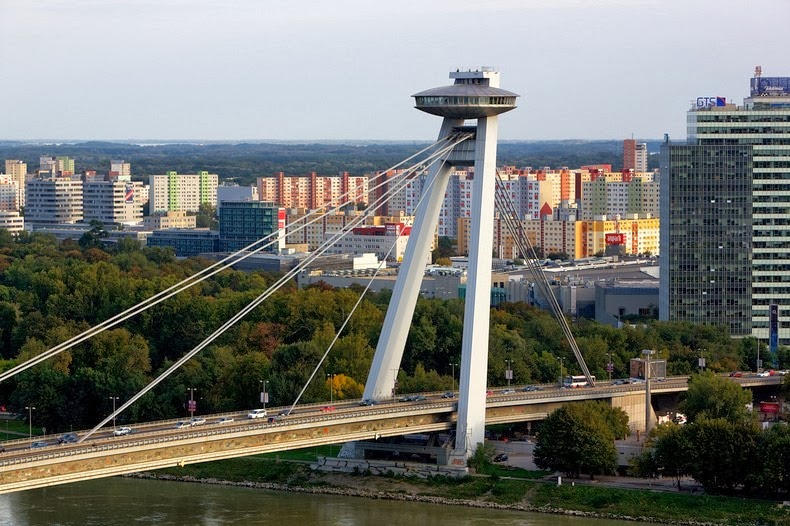The UFO Bridge of Bratislavaa

The Bridge of the Slovak National Uprising, commonly known as Most Slovenského národného povstania or Most SNP in short, is a road bridge over the Danube river in Bratislava, the capital city of Slovakia. The bridge was built in late 1960s and early '70s at the height of Communist excess, in honor of the 1944 resistance movement against the Nazi forces.
The very retro-futuristic SNP Bridge was inspired by the optimistic futurism of the 1960s, evident from the flying saucer-shaped structure at the top of the bridge’s only pylon. The UFO structure actually houses a restaurant reached using an elevator and offers a beautiful panoramic view of Bratislava.Above Photo credit
The asymmetrical cable-stayed bridge is 431 meters long with a main span length of 303 m. Indeed, it’s the world's longest cable-stayed bridge to have one pylon and one cable-stayed plane. The restaurant is located some 90 meters above the river below.
Although officially the bridge has been renamed to “New Bridge”, it’s still referred to by its old name of Most SNP or the UFO bridge.
The UFO Bridge of Bratislava

The UFO Bridge of Bratislava

The UFO Bridge of Bratislava

The UFO Bridge of Bratislava

The UFO Bridge of Bratislava

The UFO Bridge of Bratislava

The UFO Bridge of Bratislava


No comments:
Post a Comment
Note: only a member of this blog may post a comment.